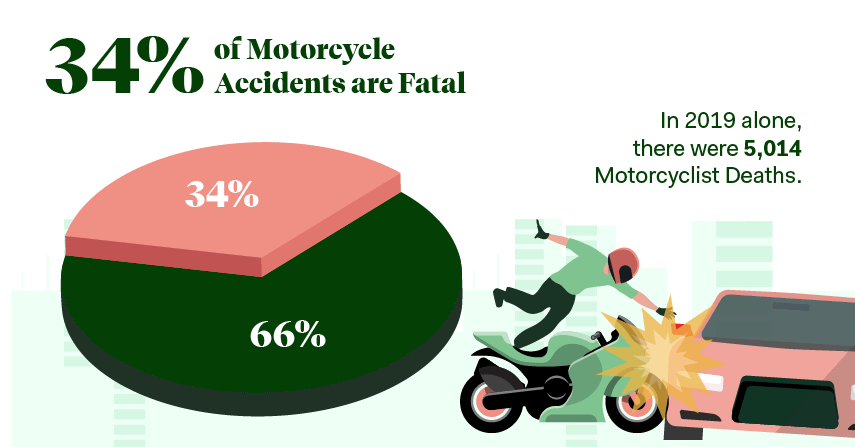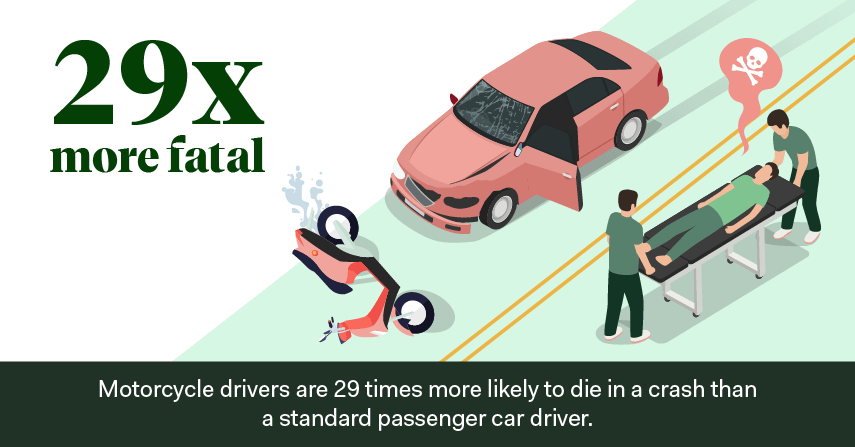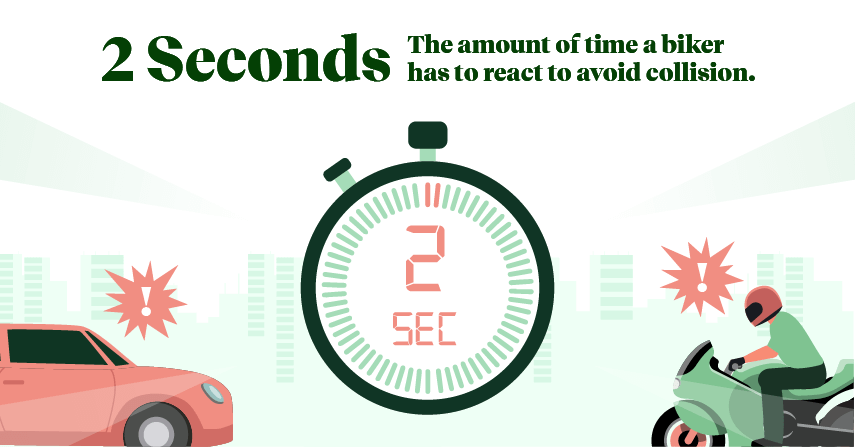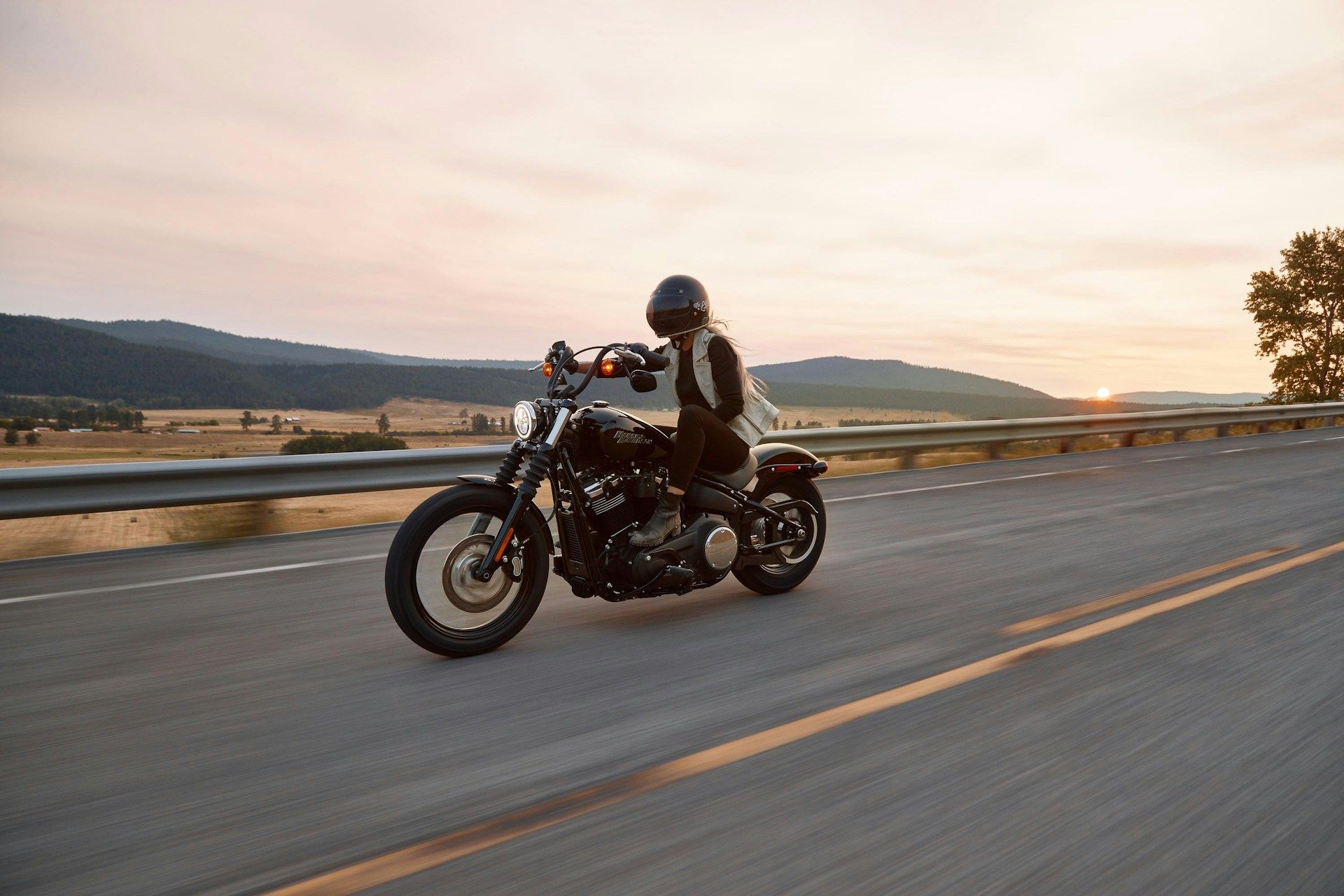Table of Contents
Motorcycle accident statistics prove that they are less common than car crashes. However, they are far more devastating and far-reaching in their consequences for the rider and passenger.
Despite the frequent catastrophic crashes, Americans have a love affair with the motorbike that keeps on going.
How dangerous is it really for motorcyclists on America’s roads?
Key Takeaways
- Motorcycle accidents are some of the deadliest accidents there are.
- Many survivors have substantial medical bills, and may end up living with permanent injuries.
- MKP Law Group, LLP wants you to know the facts about motorcycle accidents so you can make the best choices for your needs and safety.
What is the Equipment Currently on the Road?
You have undoubtedly seen your fair share of Yamaha V-Max and BMW R18s on the road. However, do you know how many machines are currently on the road? Moreover, which models are the most popular? Besides that, how old are the bikes you see on the roads every day?
8.3 Million Registered Motorcycles.

The IIHS reveals that there are 8.3 million registered motorcycles currently on American roads.
Since 2002, the total registered motorcycle count has doubled.
There may be even more on the roads, though. Statisticians warn that choppers are likely under-counted because they are a new classification. This also goes for custom-builds that do not have a VIN.
950,780 Motorcycle Registrations in California.
Of the more than 8 million motorcycles, 950,780 are registered right here, in California. It makes the Golden State the number one location for bike riders.
42.1% of Riders Favor the Cruiser.
Although touring bikes also made a good showing at 21.8%, the overwhelmingly favorite motorcycle is the cruiser. Not counting the chopper, the sport touring bike was the least favorite, with only 2.4% of riders selecting the style.
62.7% of Bikes are Older than a Decade.
Statistics show that 5,206,409 registered bikes are older than ten years.
The Reality of Motorcycle Fatalities and Injuries
It is common knowledge that riding a motorcycle can easily lead to a fatal motorcycle accident. The absence of a passenger car’s protective auto body maximizes the injuries the rider could experience.
How serious is the danger?
Besides that, what types of injuries can happen when you are riding?
34% of Motorcycle Accidents are Fatal.
Citing the National Highway Traffic Safety Administration, the III explains that 5,014 motorcyclists died in 2019. This number is slightly down from 2018 when the number of motorcycle deaths reached 5,038.

This means that 34% of those involved in an accident died.
1,689 Alcohol-Related Fatalities.
Riding a motorcycle is dangerous when sober, and the chances of a fatal crash only increase when drivers are over the legal limit for alcohol. Some 1,689 of deadly bike crashes involved alcohol. Of these, 33% had a BAC of 0.01 or more. Twenty-five percent were at 0.08 or more.
29 Times More Likely to Die.
Experts averaging the numbers found that a motorcycle rider is 29 times more like to die in a crash per vehicle mile traveled than an occupant in a standard passenger car.

Imagine the difference in bodily protection for a standard vehicle vs. a motorcycle.
84,000 Injuries in 2019.
The majority of accidents did not have a fatal outcome. In 2019, there were about 84,000 injuries among motorcyclists. This translates into an injury rate of 426 per 100 million vehicle miles traveled that year. Per 100,000 registered motorcycles, their figure reaches 975.
23.7% of Motorbike Riders Died between 3 p.m. and 6 p.m. on Weekdays.
It is unclear if this has to do with rush hour driving of those who choose their bikes rather than a passenger car. On weekends, the deadliest time was between 6 p.m. and 9 p.m.
Helmets are 37% Effective in Preventing Fatality While Riding a Motorcycle.
Besides that, Bank Rate underscores that wearing a motorcycle helmet is 67% more effective in preventing brain injuries in motorcyclists.
Even so, in only 18 states, is there a mandatory motorcycle helmet law.
109,000 Total Motorcycle Accidents in 2018.
Of the 109,000 accidents, 62,000 involved a collision with a motor vehicle. While 2,881 crashes were fatal, 42,000 resulted in injuries and 18,000 in property damage. Other accidents were collisions with a fixed object, collisions with something that was not stationary, and non-collisions.
It is important to understand that injuries involving motorcycles can be devastating. Examples include broken bones, amputations, road burns, spinal cord injuries, paralysis, and traumatic brain injuries.
61.3% of Motorcycle Traffic Deaths Happened in Cities.
The NSC shows that 3,061 or 61.38% of deadly motorcycle crashes happened in urban areas.
Cities have busy roadways with lots of traffic including standard road traffic and commercial delivery trucks.
88.93% of Motorbike Fatalities Occur in Cloudy or Clear Weather.
It is a misconception that rain is to blame for the majority of motorcyclist fatalities. In fact, only 1.99% of motorbike deaths happened when there was rainwater on the road. The vast majority, 88.93%, took place during clear or cloudy weather.
Motorcycle Accident experts consider common causes of fatal motorcycle accidents to be speeding, riding while drunk, lane splitting, sudden lane changes, and overall reckless motorcyclist driving. Please note that these figures do not involve the errors in judgment made by the car, van, or truck’s driver.
74% of Accidents Involving Motorcycles are Frontal Collisions.
This means that a car’s driver hits the biker head-on. It explains why about 80% of reported accidents become fatalities.
91% of Motorcyclist Deaths are Men.
This statistic dates back to 2019 when the overwhelming majority of deaths during motorcycling happened to men. It is noteworthy that the demographic most commonly associated with riding is the over-40 group.
By the way, for those with supersport motorcycles (an engine size greater than 600cc), you are four times as likely to die as the riders of regular bikes.
How to Minimize Your Risk of Becoming Involved in a Debilitating or Deadly Motorcycle Accident
It is virtually impossible to guarantee your safety or health while riding a bike.
That said, you have a few options of at least protecting yourself somewhat. Here are some motorcycle riding stats that can help you stay informed and hopefully safer.
Boots Reduce Ankle Injuries by 90%.
Few motorcycle drivers invest in armored motorcycle boots. However, doing so could reduce your risk of dealing with feet or ankle injuries by 90%.
29.8 Mph is the Average Speed Before a Crash.
As noted by First Checkpoint, the average bike’s speed at the time of impact is 21.5 mph. Just before the crash, it is about 29.8 mph. The anecdotal speed of about 86 mph only happens once in 1,000 cases.
2 Seconds to React.

Bikers have only two seconds to react to the chance of a crash. In these seconds, they must take all actions necessary to avoid a collision. You may be able to increase your reaction time by keeping more space between you and other vehicles.
27% of Bike Riders Have no Valid License.
Riding a motorcycle is a learned skill. Even so, of fatally injured drivers, 27% did not have a valid driver’s license. Do not ride a bike unless you took the time to go through a course and get a license. It is not like driving a car.
34% of Fatal Crashes Occurred in Intersections.
However, the vast majority, 66%, happened in places other than intersections. Therefore, do not let your mind wander just because you are on a straight stretch of roadway.
9% of Deadly Crashes Take Place on Interstate Roads.
California’s riders, in particular, know that the Golden State has several rides that take bikers on the open road. However, only 9% of deadly accidents happen out there. In contrast, 91% of deadly events occur on roads that are not interstates. Examples include the route to the grocery store or the way to work.
Engine Sizes Greater Than 1,400cc are Deadlier.
Of the riders who were killed during a crash, motorcycle accident statistics suggest that 33% were riding an engine size that was greater than 1,400cc. These are the bikes with quite a bit of power.





